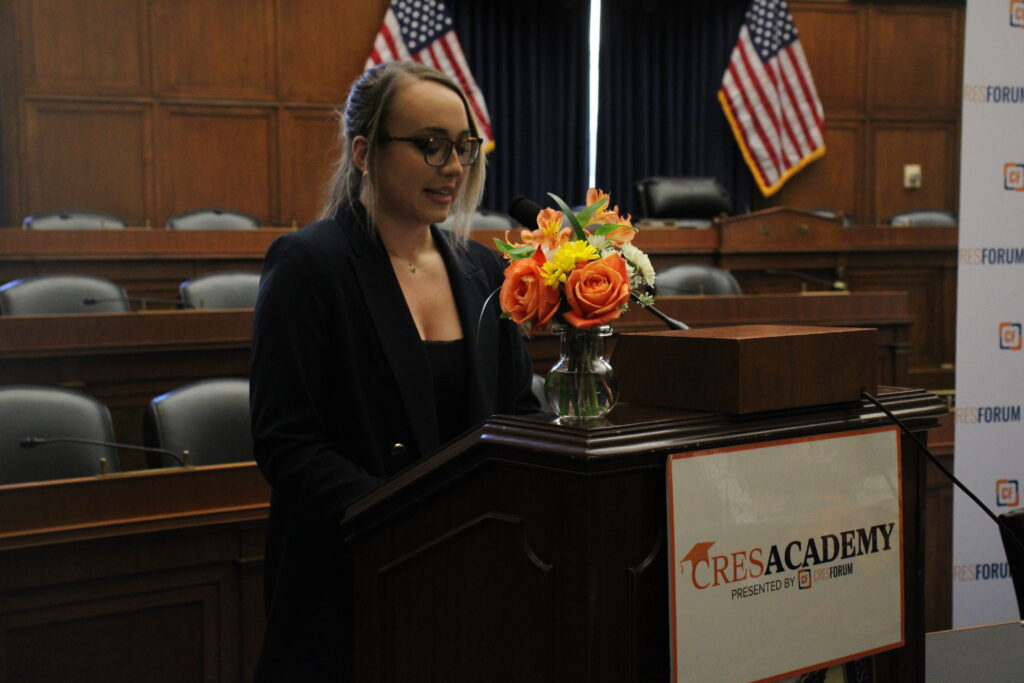Last week, CRES Forum hosted their second CRES Academy session of the year: “45X 101: Ensuring American Manufacturing Dominance and Resilient Supply Chains.” This session featured several high-profile industry leaders and stakeholders to discuss energy and tax policy concerning the crucial 45X tax credit, its benefits to consumers and identifying best methods when conveying priorities to lawmakers and relevant agencies in Washington, D.C.
For those who aren’t familiar with the tax credit, Section 45X of the Internal Revenue Code provides an advanced manufacturing production credit to domestic manufacturers of applicable clean energy components. This credit is a critical piece to an all-of-the-above energy approach to achieve American energy dominance.
Moderated by CRES’ own Christina Baworowsky, Vice President of Policy and Advocacy, panelists included Nicole Elliott, Partner at Holland & Knight, Cole Simons, at GE Vernova, Rachel Harris, at Invenergy, and Michael Davin at National Association of Manufacturers. Together, they discussed 45X’s contribution to wind, solar and battery energy storage components, and how businesses nationwide can remain competitive in a global marketplace using existing tax credits. Many staffers asked the panel for the best way to talk to their own bosses—Republican members of Congress—about the benefits of 45X and other credits businesses in their districts use or can potentially use.



The reality is 45X isn’t just a tax credit, it’s an economic engine that fuels job creation and brings down costs—strong priorities for conservatives. The 45X tax credit is also intended to incentivize investment in the U.S., which increases the nation’s overall competitiveness in the clean energy market. This in turn gives homegrown businesses stronger supply chains and access to cutting-edge technology that helps the U.S. remain a global leader in clean energy.
The panelists all agreed about the importance of utilizing the 45X tax credit and reiterated that it is really about job creation, investment and staying ahead of adversarial nations, such as China. All these factors and more are key when discussing these tax credits as a red, white and blue issue, instead of partisan rhetoric. For more information, you can read more about the power of the 45X credit here.
As discussions around key tax credits like 45X continue on Capitol Hill, CRES Forum remains committed to educating lawmakers and staff on commonsense clean energy solutions that increase global competitiveness and ignite the American economy.